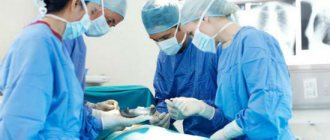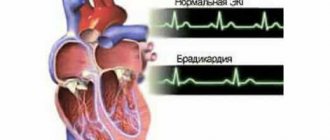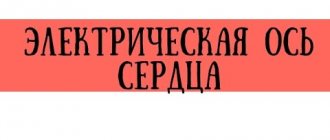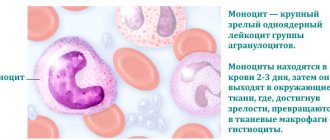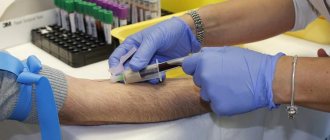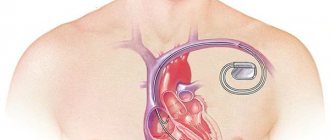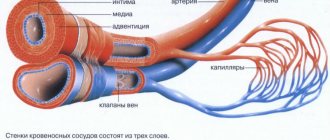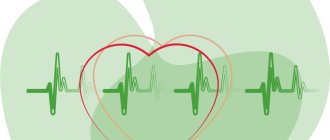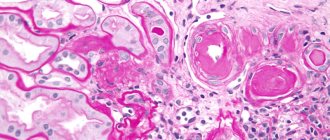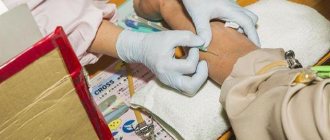Pathogenesis
The mechanisms of development of bradycardia are different, and most of them are associated with pathology of the sinus node , the main pacemaker. The main pulse generator of the heart is located in the right atrium. Bradycardia can be considered a normal variant in athletes and people who simply exercise regularly.
Pathological bradycardia can form against the background of abnormal functioning of the sinus node or as a result of changes in the conduction system of the heart. In the first case, the reason lies in the incorrect generation of impulses from the sinus node, and in the second, after the normal generation of impulses, they are incorrectly distributed among the parts of the heart, which is reflected in the slowdown in contraction of the atria and ventricles.
Classification
Based on the location of violations, the following are distinguished:
- Sinus bradycardia . A decrease in heart rate is associated with disturbances in the automaticity of the pacemaker - the sinus node.
- Bradycardia caused by sinoatrial block (CA) and atrioventricular block (AV). The reason for the slowing of the pulse lies in the disruption of its conduction from the sinus node to the atria and ventricles. Second degree sinoatrial block is characterized by the problem of impulse formation. Second degree sinoatrial block is divided into 2 types: first and second. Intraatrial block is characterized by a violation of the passage of impulses into the atria. The second name is interatrial block.
Due to development they are classified:
- Sinus bradycardia in athletes. It is considered a physiological norm for athletes and does not require specific treatment. All you need to do is monitor and control your heart rate in response to exercise. Most often, bradycardia and sports are closely related.
- Drug-induced bradycardia. Incorrectly selected doses or too long use of rhythm-lowering drugs can cause reversible drug-induced bradycardia.
- Toxic bradycardia. Develops against the background of poisoning, intoxication and infections.
- Organic bradycardia. Associated with pathological changes in the heart ( cardiosclerosis , myocarditis , myocardial infarction , myocardial dystrophy ).
- Neurogenic or extracardiac bradycardia. Associated with neuroses , neurocircular dystonia , autonomic dysfunction , physical effects on the eyeballs or carotid sinus , myxedema , increased intracranial pressure .
- Idiopathic bradycardia. The reason for the development is unknown.
Bradycardia is also divided into:
- Physiological: a decrease in heart rate occurs at a physiological level and does not require specific treatment.
- Pathological: a decrease in heart rate can be acute or chronic and caused under the influence of certain pathological factors.
Causes
Most often, bradycardia develops against the background of other diseases (not only cardiovascular, but also noncardiac).
Destructive changes in electrical impulse conductivity are identified. These include:
- cardiac ischemia;
- myocardial infarction;
- myocarditis and other inflammatory heart diseases;
- cardiomyopathy;
- angina pectoris.
A decrease in the speed of electrical impulse conduction is also noted. The condition may be associated with:
- high blood pressure;
- dysfunction of the thyroid gland (insufficient activity);
- sick sinus syndrome.
There is a certain relationship between some factors and bradycardia:
- classic age-related changes in the myocardium, which manifest themselves by the age of 45-50;
- overdose or incorrectly selected dose of medications that slow down the heart rate;
- abuse of alcoholic beverages, bad habits (smoking);
- bradycardia is rarely congenital; modern diagnostic methods make it possible to timely diagnose bradycardia in the fetus (in this case, the cause may be intrauterine exposure to both external and internal factors).
Symptoms of bradycardia
In most cases, moderate or physiological bradycardia occurs without severe symptoms and does not in any way affect blood circulation in the body. A certain clinical picture is formed when the heart rate decreases to less than 40 beats per minute. Characteristic symptoms:
- excessively rapid fatigue;
- general weakness throughout the body;
- dizziness;
- sweating;
- flashing “flies” before the eyes, darkening in the eyes;
- pre-fainting and fainting states .
The symptoms and treatment of bradycardia are closely related, because tactics are determined depending on the reason that led to a rare heartbeat.
What does it represent?
The pathology often occurs without pronounced symptoms. In some cases, sinus bradycardia is accompanied by dizziness and chest pain. In severe forms of the pathology, confusion may occur.
The disease code according to the International Classification of Diseases ICD-10 is R00.1 (bradycardia, unspecified). The pathology is included in a section devoted to deviations from the normal heart rhythm.
Tests and diagnostics
For diagnostic purposes, patients with a rare pulse undergo a special examination:
- listening to heart sounds using a phonendoscope and stethoscope;
- ECG film analysis at rest and after exercise;
- carrying out bicycle ergometry ;
- conducting daily Holter ECG monitoring ;
- conducting echocardiography ;
- analysis of biochemical parameters of urine and blood;
- analysis for toxins if poisoning or intoxication of the body is suspected;
- transesophageal electrophysiological study of the cardiac conduction system (used only if the ECG fails to detect certain changes or blockages);
- carrying out bacteriological analysis of urine and blood if infection is suspected.
Procedures and operations
In some cases, to treat bradycardia it is necessary to resort to surgical treatment:
- removal of tumors and neoplasms of the mediastinum;
- implantation of a pacemaker .
Main indications for pacemaker implantation:
- atrial fibrillation and atrial flutter with a pulse less than 50 beats per minute;
- sick sinus syndrome with circulatory failure of III-IV degree or episodes of Morgagni-Adams-Stokes attacks;
- AV blockade IIb-III degree , which cannot be corrected and occurs 3-4 weeks after myocardial infarction;
- acquired AV block of IIB-III degree with episodes of Morgagni-Adams-Stokes attacks or circulatory failure of III-IV degree.
Relative indications for pacemaker implantation:
- chronic bi- and trifascicular blockade;
- congenital complete AV block in adults with 3rd degree circulatory failure;
- congenital AV block with circulatory failure of 3-4 degrees or SSU with episodes of Morgagni-Adams-Stokes attacks;
- an increase in the width of the QRS complex on the ECG by more than 0.8 s and a prolongation of the HR interval by more than 100 ms.
The pacemaker is selected individually depending on the degree of hemodynamic disturbances and the causes that caused them.
Symptoms
Clinical manifestations occur when hemodynamics and circulatory disorders are disrupted. As soon as problems begin with saturating the tissues of the body and brain with oxygen, the patient experiences the following symptoms:
- weakness, malaise;
- semi-fainting state;
- chest pain;
- respiratory dysfunction;
- decreased visual acuity.
With progressive bradycardia, episodes of confusion and decreased concentration occur. The most dangerous symptom of bradycardia is a Morgagni-Adems attack - convulsions lasting from 30 to 60 seconds. The condition requires medical intervention, since as the duration of the attack increases, there is a risk of developing respiratory failure.
Treatment of bradycardia with folk remedies
How to treat bradycardia at home? The basic treatment regimen prescribed by the doctor can be supplemented with traditional medicine methods:
- decoction of rose hips;
- tincture of pine shoots;
- garlic with lemon juice;
- radish with honey;
- yarrow decoction;
- walnuts with sesame oil;
- Tatar decoction;
- tincture of Chinese lemongrass;
- yarrow decoction;
- infusion of immortelle flowers.
Treatment with folk remedies must be agreed with your doctor in order to take into account possible contraindications and exclude individual intolerance to the components of the prescription.
How to treat cardiac arrhythmia (CHR)?
Treatment of the disease includes 2 main phases:
- providing urgent care in the presence of an acute form of the disease and eliminating complications;
- treatment of diseases that provoked the development of sinus bradycardia.
Drug treatment
If the patient has sinus bradycardia, tablets from the group of anticholinergic drugs can be used. In case of frequent fainting and a sharp deterioration in the patient’s condition, a pacemaker is installed.
If the cause of the pathology is poisoning with toxic substances, detoxification therapy can be carried out.
Important! If your heart rate has become slower due to medications, it is recommended to reduce the dosage of the appropriate medications.
Treatment with folk remedies
If you have sinus bradycardia, you can use the following recipes:
- Lemons are washed and doused with boiling water. Juice is squeezed out of citrus fruits. After this, you need to peel 10 heads of garlic, which are crushed to a paste consistency. The resulting mass is mixed with lemon juice until smooth. After this you need to add 1 liter of honey. It is recommended to infuse the product in the refrigerator for 10 days. It is recommended to take 40 ml three times a day before meals. The duration of treatment is determined individually.
- When preparing a yarrow decoction, it is recommended to pour 50 grams of plant material into 450 ml of warm water. It is recommended to bring the resulting mixture to a boil over low heat. The product is boiled over low heat for 10 minutes. After this, the drink is infused for 60 minutes. It is recommended to strain the medicinal decoction using a sieve. It is recommended to use 10 ml of the product three times a day. The average duration of treatment is 30 days.
First aid
With a sharp drop in blood pressure and a decrease in heart rate, a presyncope or fainting may develop. First aid:
- lay the patient on his back, elevate his legs, place a pillow or cushion and call an ambulance;
- remove clothing that restricts breathing;
- ensure optimal temperature conditions and fresh air flow;
- rub the ears, sprinkle the face with cool water or pat the cheeks to bring the patient to consciousness;
- if ineffective, give a cotton swab soaked in ammonia or vinegar; to avoid sudden bronchospasm, the cotton wool should be brought to the respiratory tract carefully;
- if the patient wakes up, try to measure the pulse and blood pressure, then give him coffee or tea with sugar; find out if the patient has any medications with him;
- After the ambulance team arrives, tell the doctor all the circumstances and tell about the manipulations performed.
Attack and first aid
With bradycardia, the heart rate may slow down to 20 beats per minute. The following symptoms may occur:
- decreased sensitivity of the limbs;
- anxiety;
- fast fatiguability;
- blue lips;
- loss of consciousness;
- the appearance of dark circles before the eyes;
- the appearance of tinnitus;
- occurrence of cold sweat.
During an attack, the patient’s well-being gradually deteriorates. Initially there are no adverse symptoms.
If an attack occurs, it is necessary to provide first aid to the patient:
- the patient is advised to take a supine position. His clothes are unbuttoned;
- it is necessary to ensure a flow of fresh air into the room and call an ambulance;
- if the patient is conscious, it is recommended to give him Zelenin drops. If the patient's pulse slows down, atropine sulfate is used as an injection.
Prevention, how to increase heart rate during bradycardia
The development of bradycardia can be avoided if you adhere to certain rules:
- refusal to drink alcoholic beverages and cigarettes;
- eat healthy foods and fresh produce;
- monitor blood cholesterol
- do not overeat;
- visit a doctor, undergo medical examinations and preventive examinations;
- get enough sleep and organize proper rest;
- reduce salt intake;
- avoid depression and stressful situations.
Only by taking good care of your own body can you avoid the development of heart pathology. If you feel that a rare heartbeat is worsening the quality of your life, then you should contact a therapist and cardiologist who will help conduct examinations and prescribe adequate timely treatment. Remember that in the absence of proper therapy, sinus bradyarrhythmia can not only worsen overall health, but also lead to such negative consequences as thrombosis , heart failure , etc.
Bradycardia in children
In children, heart rate depends on age:
- infants - 120 strokes;
- children under three years of age - 110 strokes;
- children 3-9 years old – 90-100 blows;
- 9-12 years – 80-85 beats;
- teenagers - 70-75 beats.
A sign of bradycardia in children is considered to be a decrease in heart rate by 20 units from normal. The subjective characteristics of the rhythm are taken into account, taking into account the child’s temperament, his build and weight.
Reasons why negative changes in the conduction system of the heart may develop:
- hypoxia ;
- heredity;
- poor functioning of the thyroid gland;
- impaired cerebral circulation in newborns;
- allergic reactions to medications;
- past infection, which is accompanied by changes in the water-electrolyte composition of the blood and dehydration;
- inflammatory processes in the heart muscle ( myocarditis , endocarditis );
- acquired (rheumatic heart disease) or congenital (septal defects, stenosis, tetralogy of Fallot ) heart defects ;
- increased intracranial pressure ;
- nicotine and lead poisoning;
- medication overdose;
- hypothermia.
Sinus bradycardia of the heart in children can be physiological in nature and manifest itself as a result of too rapid growth of the child during puberty. Teenagers during this period are susceptible to stress, mood swings and neuroses. The endocrine system lags behind in development compared to other organs and systems. Failures in metabolic processes lead to the development of arrhythmia.
Bradycardia in a 5-year-old child is most often detected during a medical examination (if no organ pathology from the cardiovascular system was detected before 5 years of age, then, most likely, a rare pulse is a physiological feature). Deviations worth paying attention to:
- lethargy, drowsiness , weakness;
- severe shortness of breath after running and playing;
- instability of blood pressure;
- swelling, cyanosis and pallor of the nasolabial triangle;
- chest pain;
- inattention, absent-mindedness and memory impairment;
- loss of appetite;
- attacks of weakness accompanied by a rush of sweat.
Only your local pediatrician and cardiologist will tell you what pills to take and what additional examination you need to undergo. You should not self-medicate your child.
Sinus bradyarrhythmia. What is it like in children?
Bradyarrhythmia in children is most often associated with pathologically high tone of the vagus nerve. The problem can occur with infectious diseases, vegetative-vascular dystonia, with genetic predisposition, and diseases of the thyroid gland. Bradyarrhythmia in children under 1 year of age is associated with disturbances in the development of thermoregulation. That is why when the ambient temperature decreases, the pulse rate also changes. In adolescents, rhythm disturbances are associated with the influence of the vagus nerve on the production of impulse contractions by the sinus node.
ECG symptoms and signs
The diagnosis may be accompanied by the following symptoms:
- dyspnea;
- weakness;
- drowsiness;
- rapid breathing;
- lethargy.
In the presence of sinus bradycardia, the ECG interpretation shows a characteristic change (increase) in the interval between the upper RR teeth. The interval on the PQ cardiogram has a normal duration.
In women, bradycardia most often occurs during pregnancy. During this period, a representative of the fair sex may experience severe nervous tension. Sinus bradycardia can also occur during menopause. During menopause, the production of sex hormones stops.
In men, bradycardia most often occurs due to heavy physical work.
Bradycardia in the fetus during pregnancy
During a routine examination, fetal bradycardia may be detected. If the number of heartbeats of the embryo is less than 110 beats per minute, then this is considered a pathology. An insufficient number of heart contractions negatively affects the blood circulation of the fetus and, accordingly, its growth and development. The embryonic heart begins to develop from the second week of pregnancy.
With fully formed heart chambers, bradycardia can be diagnosed at 6-8 weeks. Fetal bradycardia during pregnancy 6 weeks is a relative concept, because There are no clear standards for these periods. In the first stages of development, the embryo's heart contracts at a frequency of 40 beats. As veins, aortas and vessels form, the frequency begins to increase. By the end of the ninth week, the pulse reaches 175 beats per minute.
Bradycardia in a newborn
For infants, the norm is 100 beats per minute. The causes of bradycardia in newborns lie in pathological processes that occur in the heart muscle and myocardium. Most often, the reason also lies in hypertonicity of the vagus nerve. Some newborns are diagnosed with absolute bradycardia - a condition in which the rhythm is constantly slow and does not depend on any reason.
In the relative form of bradycardia, the rhythm slows down under the influence of certain factors, for example, hyperthermia . Moderate bradycardia in a newborn is considered a common phenomenon and is characterized by a slowdown in heart rate during exhalation, which is especially pronounced during hypothermia. Pathology can be congenital or acquired.
Two types of disease
There are two types of bradycardia:
- as a normal phenomenon;
- as a symptom of chronic diseases.
Heart rate may become slower due to exposure to a variety of environmental factors. In this case, it can be considered a variant of the norm. Bradycardia may indicate the presence of serious illnesses, in particular heart failure.
Like the norm
Your heart rate may slow down during sleep. Sinus bradycardia often occurs when performing heavy physical work. A slowdown in heart rate can occur if the patient is in a supine position for more than a day.
The presence of physiological bradycardia is indicated by the following symptoms:
- there are no signs of illness;
- the heart rate (HR) reaches approximately 50 beats per minute;
- The pulse during bradycardia is in most cases smooth. The patient does not complain of arrhythmia.
As a symptom of illness
The presence of sinus bradycardia, which is a symptom of the disease, can be assumed in the following situations:
- the heart rate slows down in a paroxysmal manner;
- the patient has arrhythmia - heart beats occur at irregular periods of time;
- the patient's well-being noticeably deteriorates.
Consequences and complications. Why is cardiac bradycardia dangerous?
Complications may develop with bradycardia:
- ischemic type stroke
- pulmonary embolism;
- paroxysmal ventricular tachycardia;
- myocardial infarction.
The most dangerous complication is asystole - cessation of cardiac activity. Bradycardia is dangerous because in the absence of adequate blood circulation for a long time, ischemic changes are formed in the brain, which can lead to death.
